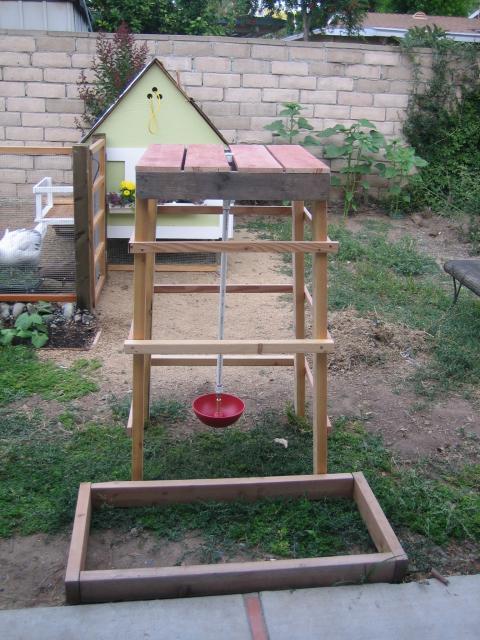It's just simple math here. The nipples require 1-5 PSI of water pressure max to function. A barrel the size of mine provides way may PSI thanks to the weight of the water. Therefore, the nipples will leak because there is more pressure than they need involved. The PSI has to match up. The Little Giant waterer allows for up to 70 PSI, therefore it will work perfectly.
lfreem2, I don't think you understood my thoughts on siphoning here. Perhaps you have never siphoned a tank of gas, nor emptied a waterbed. It does not matter that you have a lid and therefore have no vacuum. You are not looking to make a feed store waterer that requires suction to pull air back into an inverted water source. No, you do not need a pump.
If you're opposed to sucking on a hose I have nothing for you
1. Water source must be higher than your waterer (one single waterer, each waterer would require its own hose).
2. Take the top off your water source
3. stick a hose into the top of your water source and down to the bottom of the bucket/barrel. Getting air into this end of the line is where you will loose the vacuum.
4. suck on the hose like you are at the 7-11 and just bought yourself a big gulp. This is to prime the hose.
5. here is where you either hold your thumb over the line/kink the hose/or close your previously installed ball valve in order to connect the water line to your waterer.
6. make the connection
7. open water flow to the waterer
As long as your waterer is lower than the barrel the weight of the water in the water line will "pull" water from the tank. If the intake side of the hose ever gets above the water level in the tank, you will have to reprime. the line.
Each waterer would require its own line. As DickGJ said - multiple in line waterers may let air into the line.
Ah, I totally get what you meant now! You neglected to mention the sucking part. LOL!
The problem with this method is that if you ever lose "prime" for whatever reason, then your chickens have nothing to drink (and Murphy's Law always ensures that something can possibly happen!). With the gravity method, that doesn't happen unless your barrel is empty.





